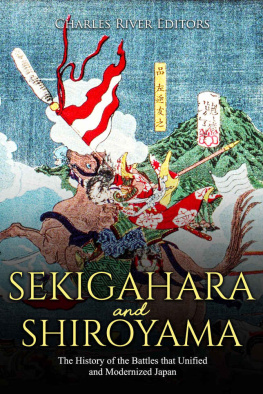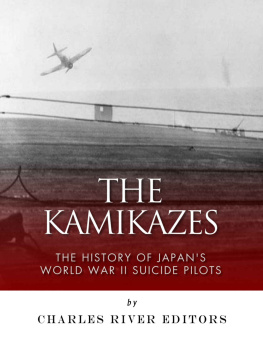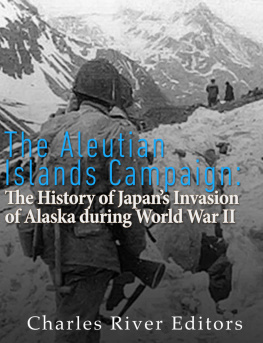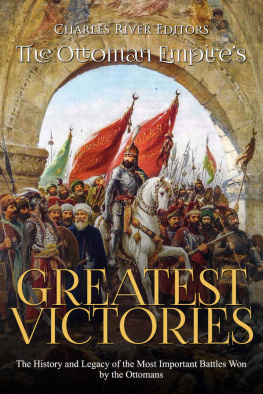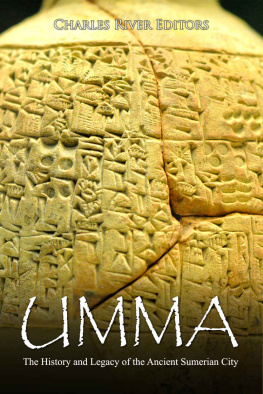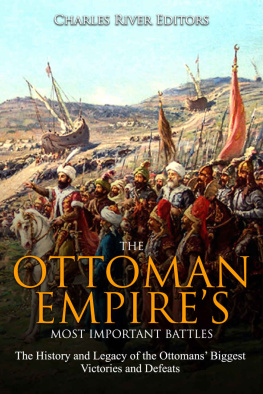Charles River Editors - Sekigahara and Shiroyama: The History of the Battles That Unified and Modernized Japan
Here you can read online Charles River Editors - Sekigahara and Shiroyama: The History of the Battles That Unified and Modernized Japan full text of the book (entire story) in english for free. Download pdf and epub, get meaning, cover and reviews about this ebook. year: 2020, publisher: Charles River Editors, genre: History. Description of the work, (preface) as well as reviews are available. Best literature library LitArk.com created for fans of good reading and offers a wide selection of genres:
Romance novel
Science fiction
Adventure
Detective
Science
History
Home and family
Prose
Art
Politics
Computer
Non-fiction
Religion
Business
Children
Humor
Choose a favorite category and find really read worthwhile books. Enjoy immersion in the world of imagination, feel the emotions of the characters or learn something new for yourself, make an fascinating discovery.
- Book:Sekigahara and Shiroyama: The History of the Battles That Unified and Modernized Japan
- Author:
- Publisher:Charles River Editors
- Genre:
- Year:2020
- Rating:4 / 5
- Favourites:Add to favourites
- Your mark:
- 80
- 1
- 2
- 3
- 4
- 5
Sekigahara and Shiroyama: The History of the Battles That Unified and Modernized Japan: summary, description and annotation
We offer to read an annotation, description, summary or preface (depends on what the author of the book "Sekigahara and Shiroyama: The History of the Battles That Unified and Modernized Japan" wrote himself). If you haven't found the necessary information about the book — write in the comments, we will try to find it.
Sekigahara and Shiroyama: The History of the Battles That Unified and Modernized Japan — read online for free the complete book (whole text) full work
Below is the text of the book, divided by pages. System saving the place of the last page read, allows you to conveniently read the book "Sekigahara and Shiroyama: The History of the Battles That Unified and Modernized Japan" online for free, without having to search again every time where you left off. Put a bookmark, and you can go to the page where you finished reading at any time.
Font size:
Interval:
Bookmark:
By Charles River Editors
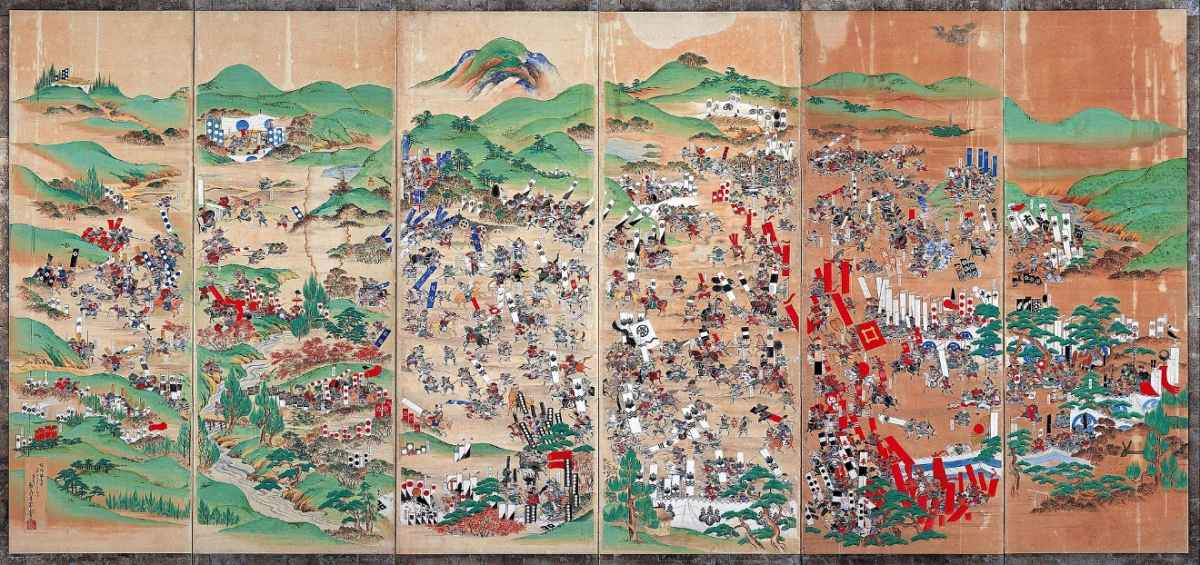
A Japanese depiction of the Battle of Sekigahara

Charles River Editors is a boutique digital publishing company, specializing in bringing history back to life with educational and engaging books on a wide range of topics. Keep up to date with our new and free offerings with this 5 second sign up on our weekly mailing list , and visit Our Kindle Author Page to see other recently published Kindle titles.
We make these books for you and always want to know our readers opinions, so we encourage you to leave reviews and look forward to publishing new and exciting titles each week.

A Japanese depiction of the Battle of Sekigahara
This young conscript army, drawn largely from the peasantry, was to receive its baptism of fire very early in its history. In the last desperate stand of the most intransigent feudal reactionaries, the samurai of Satsumawere decisively routed by the new recruits of the government armyHere we see on the one hand how the fatal preference for the sword, which was a terrible weapon for close-in fighting but hopeless against gun-fire, doomed the Satsuma samurai in the face of the infantry trained to use rifles and on the other why the government army, composed chiefly of commoners, fought so stubbornly against the samurai, whose pro-feudal ambitions they feared and detested. E.H. Norman, Soldier and Peasant in Japan (1943)
On October 21, 1600, two massive Japanese armies, totaling an estimated 200,000 soldiers armed to the teeth with swords, yari (spears), arrows, muskets and cannons, faced off on a battlefield near the town of Sekigahara. A bitter fight to the death ensued, and the results would determine the course of Japanese history for the next 250 years.
On the battlefield was the warlord Ieyasu Tokugawa, a man desiring domain over the entire island of Japan, but standing in his way was Ishida Mitsunari, a warlord controlling vast swaths of western Japan. Moving with his armies from the east, Ieyasu maneuvered into a position at Sekigahara. Ieyasu was relying heavily on the legendary Japanese samurai, but contrary to popular belief, the samurai warriors of that era were avid firearm users, and this battle would be no exception, as both armies bristled with muskets and cannons. Ieyasu was outnumbered, but he had a trump card: traitors placed in the enemy army. These treacherous warlords would join Ieyasu in the midst of the battle, turning it in his favor.
When Ieyasu became shogun (military dictator) of Japan, he presided over the beginning of the Tokugawa shogunate, which brought peace and stability to all of Japan if only by ending the constant civil wars. Many changes took place, most notably in the capabilities of the samurai, Japans ruling military class, who were no longer active combat participants. Instead, most of these warriors were fighters in name only, ruling, instead, as privileged bureaucrats. They served the Tokugawa Shogunate, a military government that moved to isolate Japan from the rest of the world, for more than two centuries, and military service became the exclusive domain of a privileged warrior class that combined the military with an intricate network of social status and vassalage to feudal lords.
On September 25, 1877, on a rain-soaked, muddy field in Kagoshima, Japan, a small group of proud samurai warrior rebels prepared for one last stand. It was early morning, 6:00 a.m., and the remaining 40 samurai warriors still capable of fighting prepared themselves for the glory of death on the battlefield. They had been shelled by powerful artillery guns and naval cannons relentlessly through the night, and the rebels had no real shelter or protection. Instead, they cowered like rats in small, rain-filled mud holes, showered by a torrent of steel shells and shrapnel.
For seven months, the samurai rebels had fought a losing battle against the army of Emperor Meiji, the new ruler of Japans central government. It was a modern army, filled with conscripts, armed with rifles, and trained in European tactics. The samurai rebels were also armed with rifles, but months of fighting had stripped them of ammunition. They still possessed their distinctive personal weapons their katana swords - and they intended to use them one last time.
Despite the overwhelming firepower and numbers advantage wielded by the central government, the rebels, led by Saig Takamori, a samurai warrior and proud defender of the samurai tradition, remained stoic in their final moments. By early morning, the last capable samurai drew their swords and launched a final suicidal charge into the rapidly firing rifles of 30,000 conscript troops, members of Japans modern imperial army. It would be the samurais last stand.
Lionized in the Tom Cruise film The Last Samurai , the Battle of Shiroyama was the dying gasp of feudal Japan. For centuries, the Japanese warrior caste, known as the samurai, had held positions of high prestige and privilege in Japan. Paid a stipend and holding both military and civil positions, the samurai were a proud group that looked down upon Japans commoners and merchants. They served the Tokugawa shogunate, a military dictatorship that ascended to power and isolated Japan from the rest of the world, for more than two centuries, ending a period of constant civil war.
This blissful isolation changed with the arrival of American Commodore Matthew Perry in 1853. In awe of the American weapons and ships, the Tokugawa shogunate quickly realized that they needed to evolve and modernize their military to survive, and a time of rapid change descended on Japan. Within a mere 30 years, the Tokugawa periods great samurai caste was extinct. Military service was no longer the exclusive domain of the privileged warrior class who had combined the military with an intricate network of social status and vassalship to their feudal lords. For the new Meiji government of Japan, military conscription was an obligation for all able-bodied men. The social castes that had existed for centuries, including the samurai, commoners, and outcasts, were replaced by a new system of national subjecthood that would propel Japan into the modern era. One group of samurai dreaded these developments, which threatened their very existence, and they launched a rebellion under the legendary samurai Saig Takamori. Japan descended into a civil war lasting seven bloody months, culminating with the battle that brought about the end of the samurai.
The Battle of Sekigahara : The History and Legacy of the Battle that Unified Japan under the Tokugawa Shogunate chronicles the events that led to one of the most important conflicts in Japanese history. Along with pictures depicting important people, places, and events, you will learn about the Battle of Sekigahara like never before.
Throughout Japans medieval era, the island state engaged in a series of wars, and due to the propensity for armed conflict, tactics and weapons were highly advanced. In the early medieval period, battles were largely fought with a combination of mounted archers, infantry with naginata (a polearm consisting of a sword blade attached to a long spear), and archers on foot.
Font size:
Interval:
Bookmark:
Similar books «Sekigahara and Shiroyama: The History of the Battles That Unified and Modernized Japan»
Look at similar books to Sekigahara and Shiroyama: The History of the Battles That Unified and Modernized Japan. We have selected literature similar in name and meaning in the hope of providing readers with more options to find new, interesting, not yet read works.
Discussion, reviews of the book Sekigahara and Shiroyama: The History of the Battles That Unified and Modernized Japan and just readers' own opinions. Leave your comments, write what you think about the work, its meaning or the main characters. Specify what exactly you liked and what you didn't like, and why you think so.

